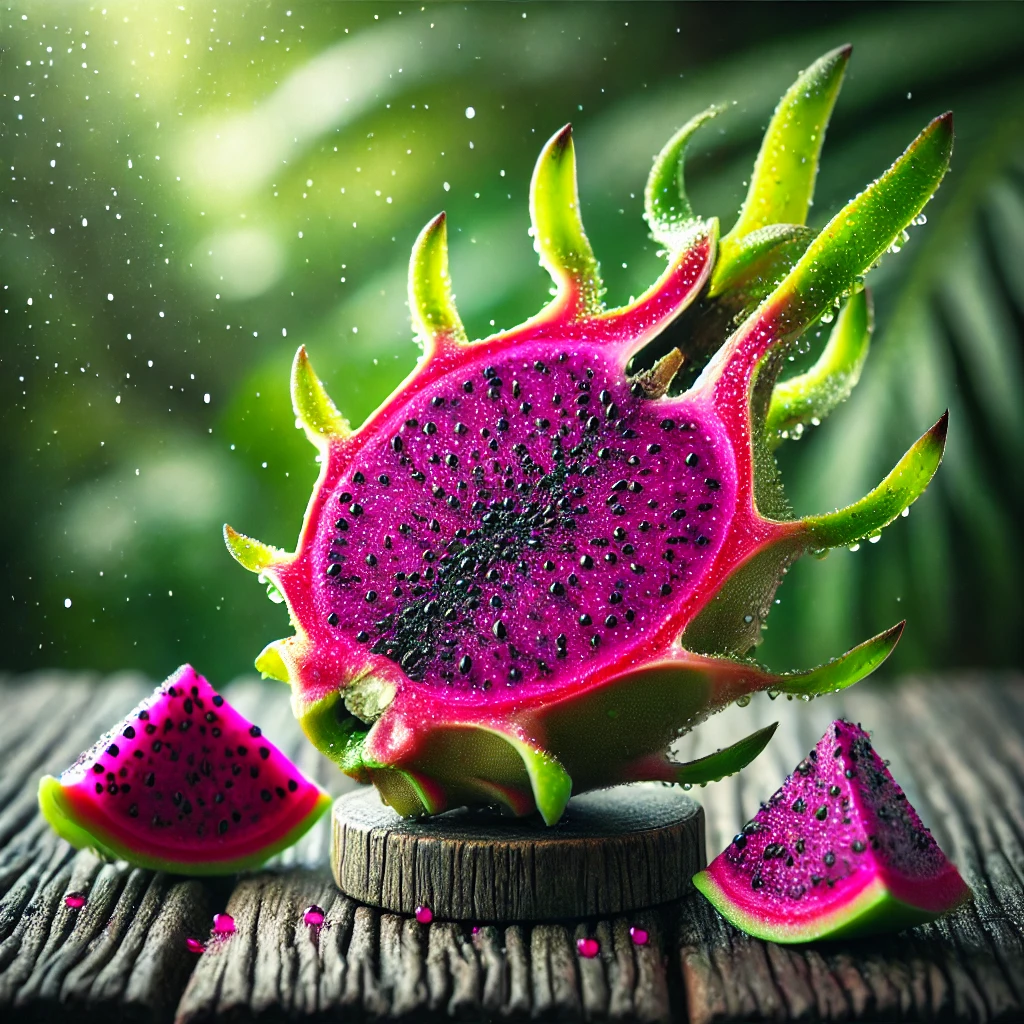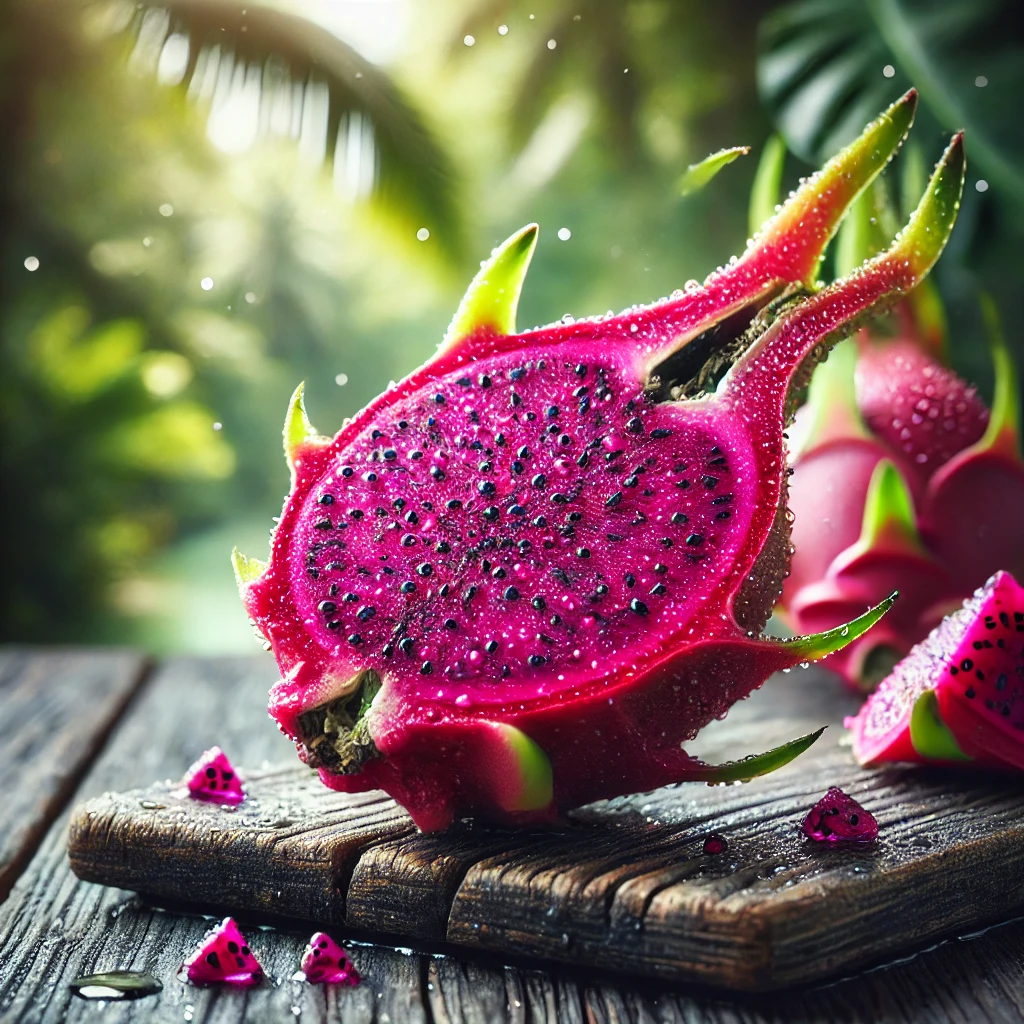Unveiling the Allure of AX Dragonfruit: A Taste of the Exotic
Dragonfruit, or pitaya, has captivated the taste buds and imaginations of food enthusiasts worldwide with its dazzling appearance and unique flavor profile. Among the varieties that have gained popularity is the AX Dragonfruit, known for its distinct characteristics and culinary versatility. This blog post dives into the world of AX Dragonfruit, exploring its origins, benefits, and the myriad ways it can be incorporated into a modern diet.
Origins and Characteristics
AX Dragonfruit belongs to the cactus species Hylocereus, which is native to the Americas but has been cultivated extensively in Southeast Asia, Israel, and other tropical and subtropical regions around the world. What sets AX Dragonfruit apart is its vibrant red flesh, which is not only a feast for the eyes but also packed with nutrients.
The skin of the AX Dragonfruit is bright pink to red, textured with what looks like dragon scales—hence the name. Inside, the flesh ranges from deep red to magenta, dotted throughout with tiny black seeds that add a slight crunch to its otherwise soft and smooth texture. The flavor of AX Dragonfruit is sweet and slightly earthy, often likened to a cross between a beet and a raspberry.
Nutritional Benefits
AX Dragonfruit is more than just an exotic treat; it’s a nutritional powerhouse. Rich in antioxidants like betacyanins, which give the fruit its red color, it helps protect against free radical damage. This variety is also a good source of vitamin C, fiber, and essential minerals such as magnesium and iron, promoting overall health from immune support to digestion.
One of the standout features of AX Dragonfruit is its content of dietary fiber, which is higher than many other fruits. This makes it an excellent option for those looking to enhance their digestive health naturally. Additionally, the seeds contain omega-3 and omega-6 fatty acids, which are beneficial for heart health.
Culinary Applications
AX Dragonfruit is incredibly versatile in the kitchen. Its striking appearance and refreshing taste make it a fantastic addition to salads, smoothies, and desserts. The fruit can be eaten raw, scooped out of the skin, or cubed and added to fruit mixes. Its vibrant color makes it an ideal ingredient for visually striking dishes, such as tropical fruit bowls or bright pink smoothie bowls topped with seeds and nuts.
For those who enjoy experimenting with flavors, AX Dragonfruit can be used to create unique sauces or dressings that add a splash of color and a hint of sweetness to savory dishes. Furthermore, it can be juiced or blended into cocktails and other beverages for a tropical twist.
Growing and Care
Cultivating AX Dragonfruit can be a rewarding endeavor for gardeners living in warmer climates. As a cactus, it requires minimal water once established and thrives in well-drained soil. It prefers sunny locations but needs some shelter from the most intense midday sun. For those in cooler climates, AX Dragonfruit can be grown in greenhouses or indoors with sufficient light.
Environmental Considerations
The cultivation of AX Dragonfruit is relatively sustainable compared to some other fruit crops. Its water efficiency makes it suitable for arid regions where water conservation is crucial. Additionally, as interest in diverse and sustainable crops increases, the cultivation of dragonfruit provides an alternative to more water-intensive fruits, potentially reducing the environmental footprint of agriculture in these areas.
Conclusion
AX Dragonfruit is a delightful addition to the fruit world, offering a combination of beauty, taste, and nutrition. Whether enjoyed fresh, in a culinary creation, or as part of a healthy diet, this exotic fruit continues to win over fans with its stunning appearance and versatile uses. As it becomes more readily available in markets around the world, more people can enjoy the unique pleasures of AX Dragonfruit, exploring new flavors while benefiting from its many health properties.

